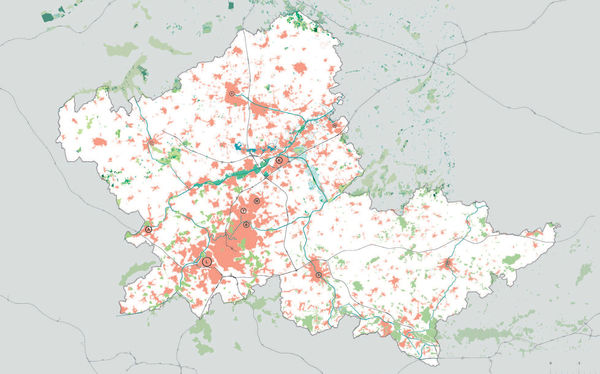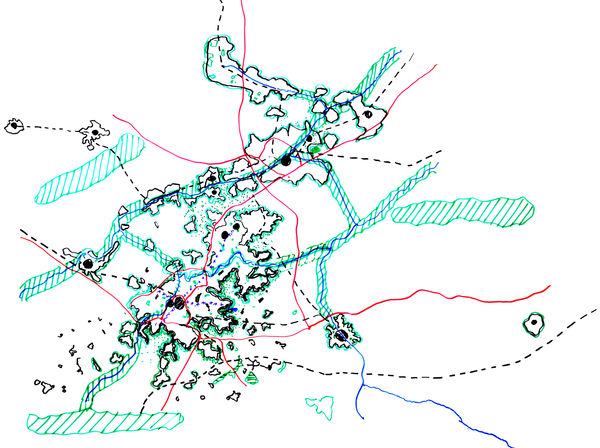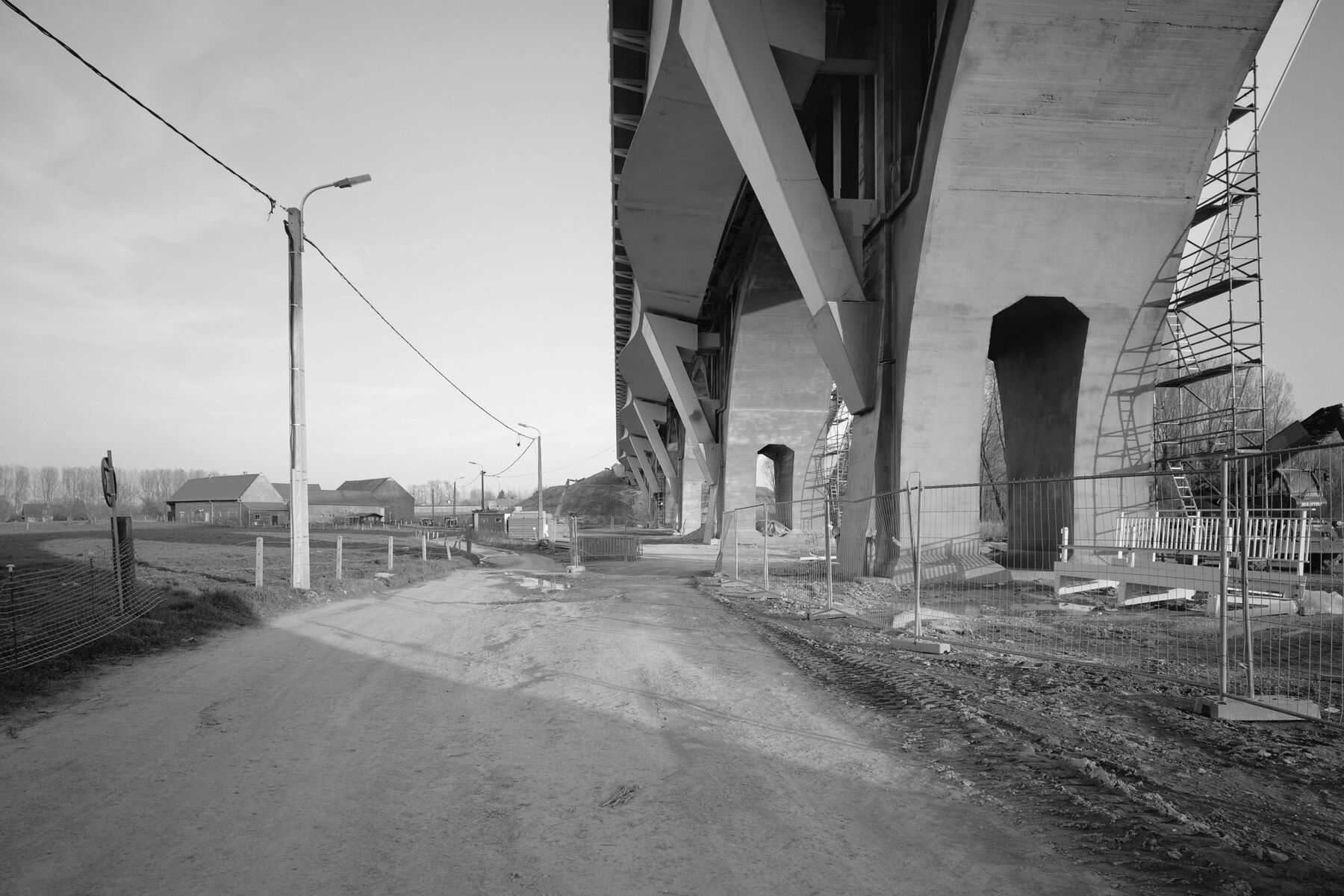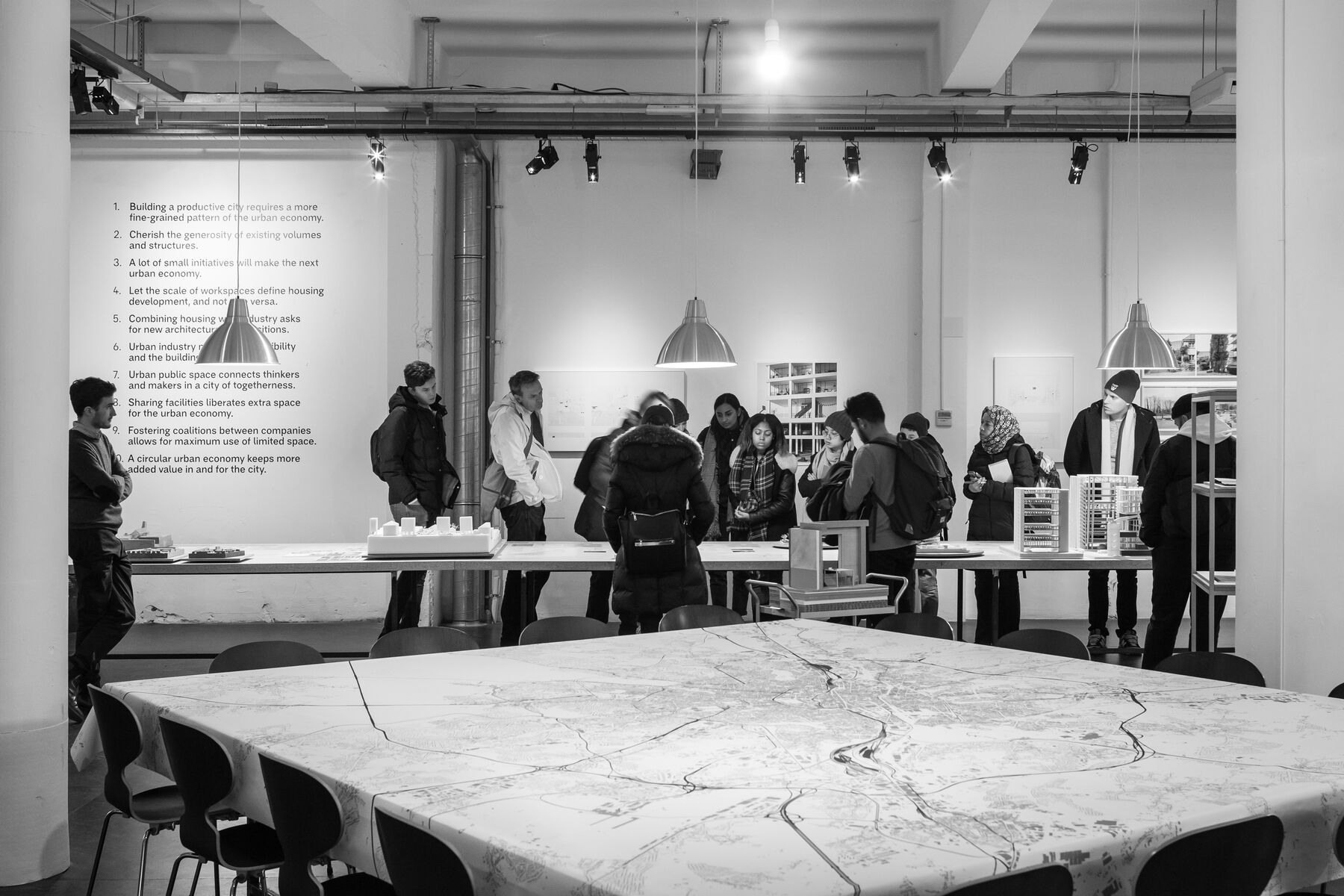International experts were invited to a prospective atelier to participate in discussions and design sessions with the aim of developing new ideas and concepts, which could provide a solution to the major challenges facing the Lille-Kortrijk-Tournai Eurometropolis. Architecture Workroom Brussels organised and moderated the workshop.
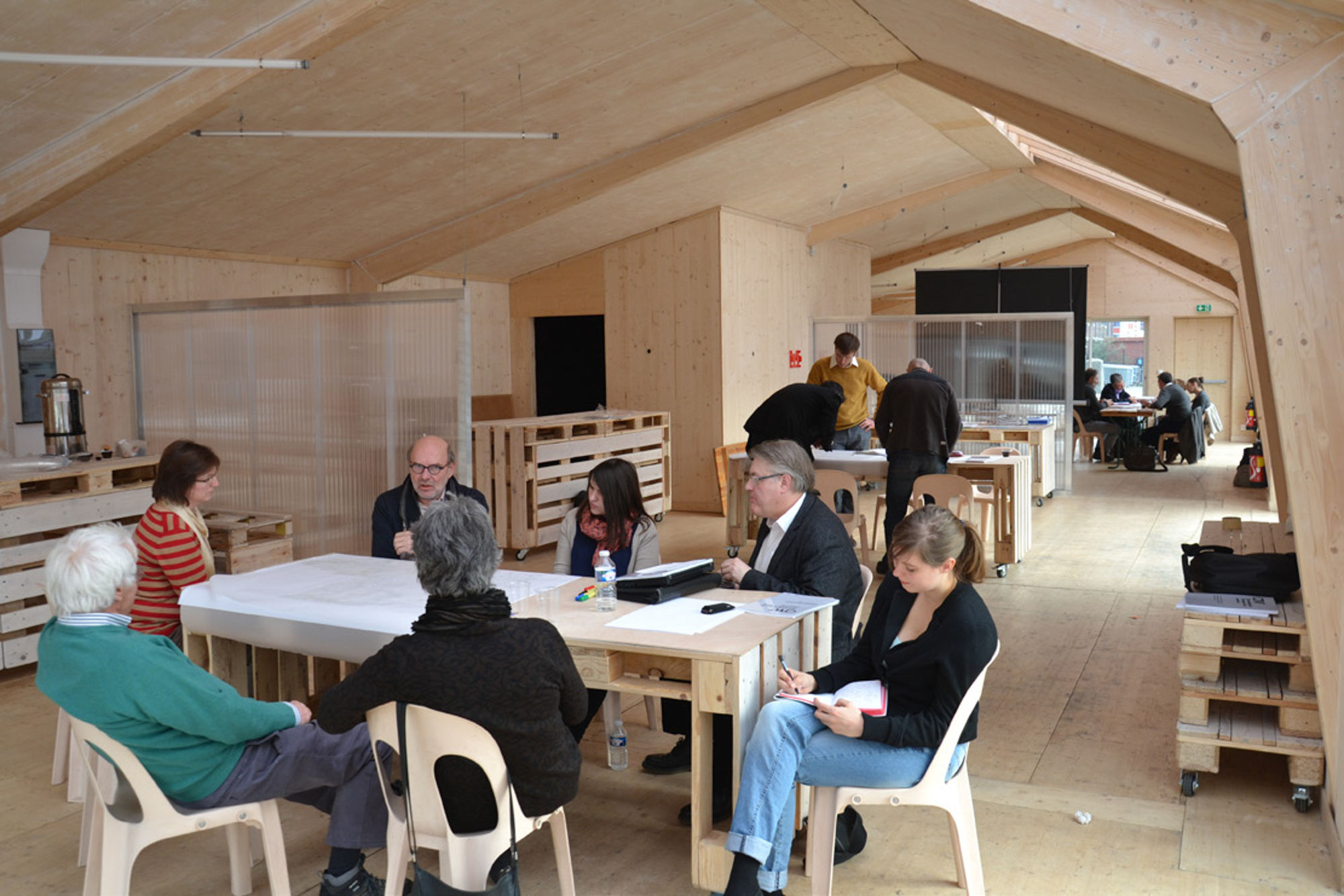
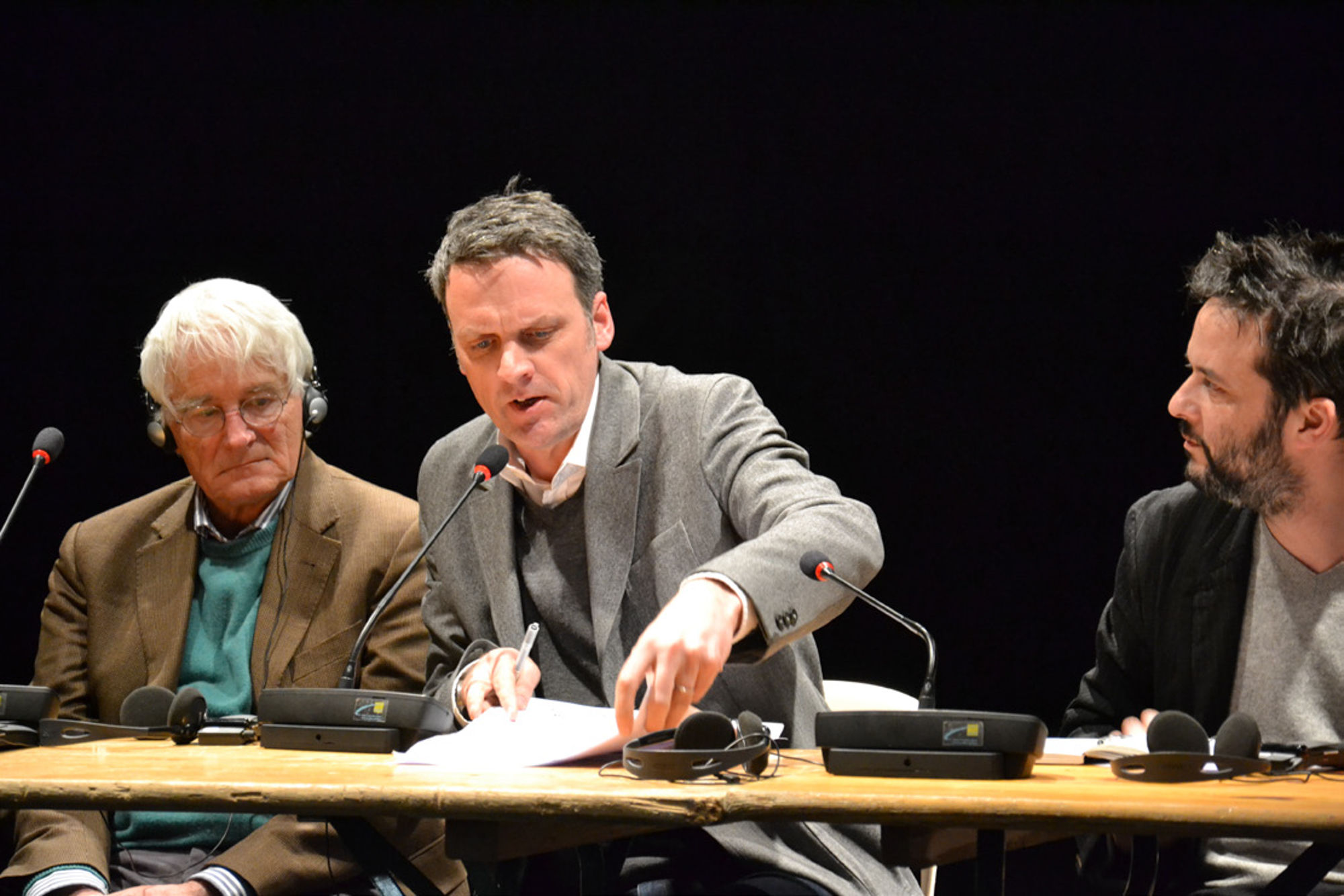
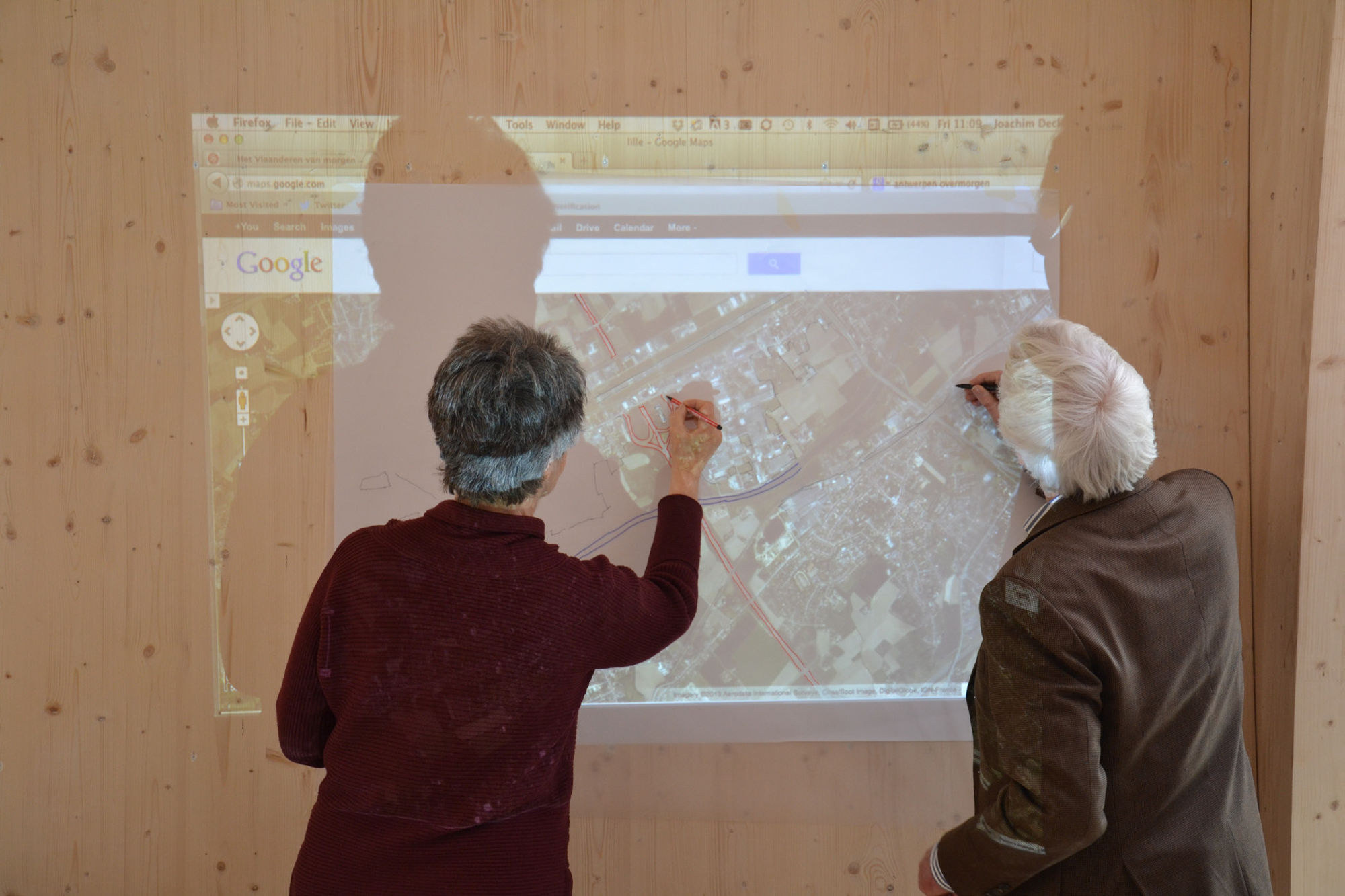
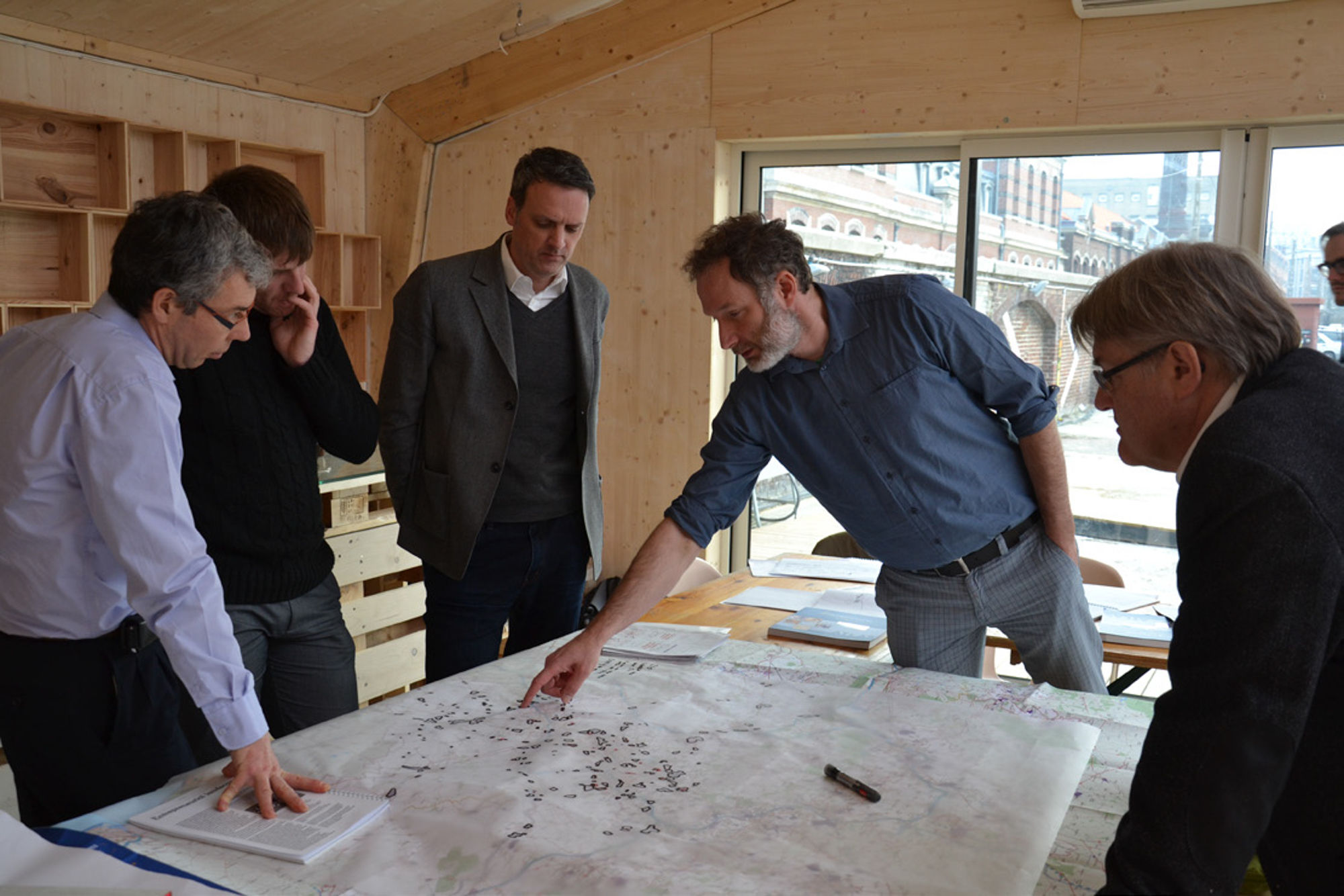
To create a dynamic working atmosphere and to stimulate the productive exchange of knowledge of the field and external views, the international experts Mark Brearley (London, UK), Ido Avissar (Paris, FR) and Thomas Sieverts (Munich, DE) were confronted with local and regional experts. During the two-day workshop, research by design was one of the methods used for exchanging and visualising ideas. Discussions were organised around maps of the area that spatially localised the challenges on the ground.
The overarching focus of the two-day atelier was the green-blue network, open space as a whole, nature and waterways, which unite the Eurometropolis across the borders of the three regions. Three approaches provided structure for the atelier:
1. Next economy
The atelier consisted of two economic trains of thought. On the one hand we posed the question of how the importance of the blue network and the impact on it from the new Seine-North Canal could act as a lever for economic development. And how the development of a creative industry could take place at key locations, linked to this blue network, on the other.
2. Productive landscape
Could we develop trains of thought from the close relationship of agri-food activities and the secondary hydrological network to achieve a more resilient and more integrated system, based on innovative practices?
3. Diffuse city
The atelier's ambition was to outline development scenarios, which could result in a more coherent system that connects infrastructure, places of employment, places of knowledge creation and the active population.
